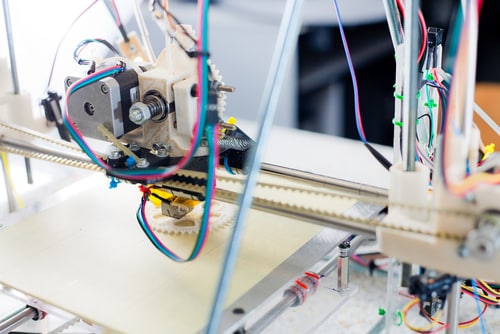The European Space Agency achieved a historic landmark in November when a mechanical space traveler, called the Philae probe, landed on a comet about 310 miles from Earth. The spaceship, named Rosetta, and this mission historically marked a momentous achievement for space exploration. Described as a “big step for human civilization,” the Rosetta mission signifies how scientifically advanced space exploration has become and will be. Most excitingly, it will explore scientific mysteries and offer cues about the early solar system.
Following the success and celebration of the comet-landing probe, NASA had announced that yet another breakthrough was made. The International Space Station’s 3-D printer created the first ever object made in space.
Advancements in Printing
3-D printing technology continues to advance profoundly. From bio-printed organs to weapons parts that can be customized with traditional firearms accessories, advancements in 3-D digital technology have progressively led to 3D-printed homes in China and even 3-D printing for DNA, vaccines, medications and bio materials. The 3-D Printing in Zero-G Technology Demonstration experiment proves that digital technology can also shift space exploration into the next frontier.
This past fall, 21st Century Tech covered the 3-D Printing in Zero-G Technology Demonstration project and its exciting launch into orbit. A Space X Dragon capsule recently delivered the printer to the space station. In space, the 3-D printer successfully manufactured a faceplate for the printhead extruder, a replacement part for the printer itself. A printer able to replicate its own parts shows that it’s a reliable tool for longer expeditions. In the future, a printer could even print another printer to sustain long journeys.
“The first print is the initial step toward providing an on-demand machine shop capability away from Earth,” said NASA’s Niki Werkheiser, the project manager for the International Space Station 3-D Printer at NASA’s Marshall Space Flight Center in Huntsville, Alabama. Developed under a contract with Made in Space, Inc., an additive manufacturing technology company, the 3-D printer serves as a significant stepping stone for longer-lasting and more sustainable missions into space. Spacecrafts now have the capabilities to create objects (spare parts and replacement tools) in space without relying on a resupply mission. The 3-D printed parts invite the possibility of fabricating crucial hardware on the station, rather than launching everything from Earth to space.
Printing on Demand
This type of technological advancement means a design file can be emailed to space for the part to be made on demand. Werkheiser adds that astronauts will be able to use larger 3-D printers to construct structures like habitats, landing pads and radiation protection, which are needed to live and operate in space for prolonged periods of time, reported Forbes.com. Even satellites will be constructed and assembled in space and then put into orbit. According to NPR.org, the International Space Station hopes to also use 3-D printing to fabricate print syringes, tweezers and sample containers on an as-needed basis.
3-D printing provides efficiency. Raw materials still need to be transported into space to make the parts. But sending the materials as opposed to the actual spare parts does initially save room. The next step in development though is to reuse 3-D printed materials using in-space recycling. Launch packaging will be used as feed stock for the 3-D printers. This project is only the beginning for future monumental capabilities that enable the reduction of mass on a spacecraft, thus improving the architecture of space exploration missions.
“As we print more parts we’ll be able to learn whether some of the effects we are seeing are caused by microgravity or just part of the normal fine-tuning process for printing. When we get the parts back on Earth, we’ll be able to do a more detailed analysis to find out how they compare to parts printed on Earth,” said Werkheiser in a press release.
It’s a revolution in space manufacturing and “a transformative moment in space development,” said Aaron Kemmer, CEO of Made in Space. Objects 3-D printed in space will be analyzed on Earth in 2015 with the goal of verifying that the 3-D printing process does indeed work similarly on Earth as in microgravity.



